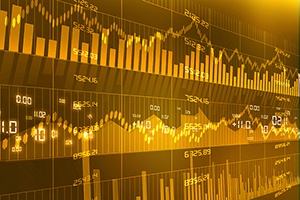 October 19, 1987, is a date that will live in stock market infamy. Known as Black Monday, it marks the largest one-day loss in history, with the Dow down exactly 508 points (22.61 percent).
October 19, 1987, is a date that will live in stock market infamy. Known as Black Monday, it marks the largest one-day loss in history, with the Dow down exactly 508 points (22.61 percent).
I wasn’t on Wall Street at the time, although I had a bunch of friends who were. Back then, I was in real estate, which went on to its own apocalypse in the next couple of years. (I’ll save that story for another day!) Talking with them, at the time and afterwards, it was hard to get a grip on just how bad it was in the belly of the beast. From where I was sitting, it was bad enough. I am sure readers old enough to have been working at the time have their own stories to tell.
So, what have we learned?
1) It wasn't that unusual. Let's put the drop in context. It was much faster than any previous bear market, although it certainly wasn’t the biggest decline. In fact, this drop wasn’t even unprecedented; the pullback in 1962 was almost as bad and the quickest up until that time. It also wasn’t that long. The recovery took only three months, which is the shortest of all bear markets. Arguably, apart from the depth of the drop, this was just a short-lived correction and, in many respects, not all that unusual.
2) It could happen again. Because (in context) it wasn’t as unusual as it is often presented, it could happen again. In fact, it has, with the flash crash in 2015. There, we saw an even bigger point decline in the Dow (998 points), although it wasn't nearly as large on a percentage basis. Still, 9 percent is enough to make you take notice. Granted, the flash crash lasted only 36 minutes, but that was a hard 36 minutes! The most important lesson here? It could happen again.
3) It didn't really have much effect. This is because the crash was short lived. Yes, we still talk about it. But how much does it really affect your investment practice? For me, the only real effect is to make me that much more aware of tail risks—a good thing. Unlike the crashes of 2000 and 2008, which lasted for years and wrecked many portfolios, this was over fast enough that long-term damage was limited.
4) There is always risk in the markets. When we look at the causes of the 1987 crash, they consist largely of a belief that risk had been removed from the markets. For institutional investors, program trading promised to manage risk through computerized trading (ooh, computers!) that constantly adjusted exposures. For retail investors, there was a sense that the market could only go up. Both assumptions turned out to be incorrect.
The real lesson of 1987
Bringing this forward to today, what jumps out at me are lessons 2 and 4. It could happen again, and—at some point—it will. With current low levels of volatility and high levels of complacency, a crash would come as even more of a shock today than it did then. Now as then, investors really believe markets are low risk, that returns are more or less ensured, and that we have things pretty much figured out.
The program trading then has become ETFs and passive investing now, but the message is the same: we think we are smarter, we understand things better, and we don’t have the risks we did then.
The real lesson of 1987, as with 2000 and 2008, is that yes, we do. So, keep your eyes open because it could happen again.


 Print
Print

